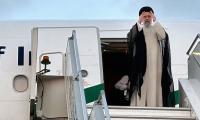Capital suggestion
Major political players: PML-N, PTI and PPP. Non political players: The Supreme Court of Pakistan (SC) and the General Head Quarter (GHQ). Context: the PML-N has landed in hot water. This, however, is not the first time that the PML-N has landed in hot water. Other such major episodes include the 1997 Supreme Court contempt-of-court hearing against the-then PM Nawaz Sharif, the PTI’s dharna of 2014, the so-called Dawn Leaks of 2016-17 and, lastly, the on-going Panama case.
Historical context: Forty-six years ago, the governance of the state of Pakistan, as per the constitution, was a tripartite system of “separation of power among a legislature, an executive and a judiciary”. For the past 36 years, the executive – whether uniformed or civilian – managed to monopolise state power, turning both the legislature and the judiciary into more or less its subservient entities.
Fast forward to 2009. The judiciary began chipping away on the executive’s monopoly over state power – as one of the major consequences of the ‘Adliya Bachao Tehreek’. Fast forward to 2017. The legislature continues to act as a subservient entity to the executive but the judiciary has taken decisive strides towards playing its constitutionally-prescribed role in the constitutionally-prescribed tripartite system.
Rewind back. The 1997 Supreme Court contempt-of-court hearing against the-then PM Nawaz Sharif: The PML-N managed to win the power play because neither the PPP nor the GHQ came in aid of the Supreme Court. And the PML-N successfully engineered a split within the Supreme Court.
The PTI’s dharna of 2014: The power play was between the PTI and the PML-N and the latter managed to win the power play because almost all major political players sided with it. And the GHQ (at least towards the end) turned steadfastly neutral. All through the dharna, the PML-N stood united within.
The so-called Dawn Leaks of 2016-17: The power play was between the PML-N and the GHQ. Surely, both the PTI and the PPP were in the game to extract political mileage but the PML-N managed to win the power play as – towards the end – the GHQ decided to make a hasty, strategic retreat.
The Panama case: The ongoing Panama case is different from the 1997 episode in the sense that a major political player – the PTI – is now standing with the Supreme Court. Additionally, it will be in the PPP’s political interest to side with the Supreme Court as well. The jury is still out on whether the GHQ will play a role or not but the GHQ coming out in support of the PML-N seems highly unlikely.
The ongoing Panama case is different from the PTI’s dharna of 2014 whereby the PML-N is now, more or less, isolated in the political arena. Plus, the PML-N is a house united no more.
To be certain, during serious power plays bureaucrats become fence-sitters and the existing cracks within the ruling party expand (even concrete cracks due to moisture change). The context of the current power play is very different from what happened in 1997, 2014 and 2016-17. The best case scenario for the PML-N is that PM Nawaz Sharif and his family satisfy the Supreme Court and come out clean. Otherwise, the trajectory of the current internal power play is entering the red zone for PM Nawaz Sharif.
The writer is a columnist based in Islamabad.
Email: farrukh15@hotmail.com Twitter: @saleemfarrukh
A health worker administers polio vaccine drops to a child during a door-to-door polio vaccination campaign in Lahore,...
Armed militants of the banned Tehreek-e-Taliban Pakistan pose for a photograph in Orakzai Agency. —...
An aeroplane of the national flag carrier of Pakistan is seen in this file photo. — AFPWhile Pakistan considers...
Representational image of a graph depicting various variables. — APP/FileInitiated by the centre and fiercely...
In this picture taken on April 16, 2023, people throng a market area during shopping in Lahore. — AFPOne of the...
Honour crimes also target men. In Sikandar Ali Lashari vs The State, SHC upheld conviction passed by ATC for honour...







